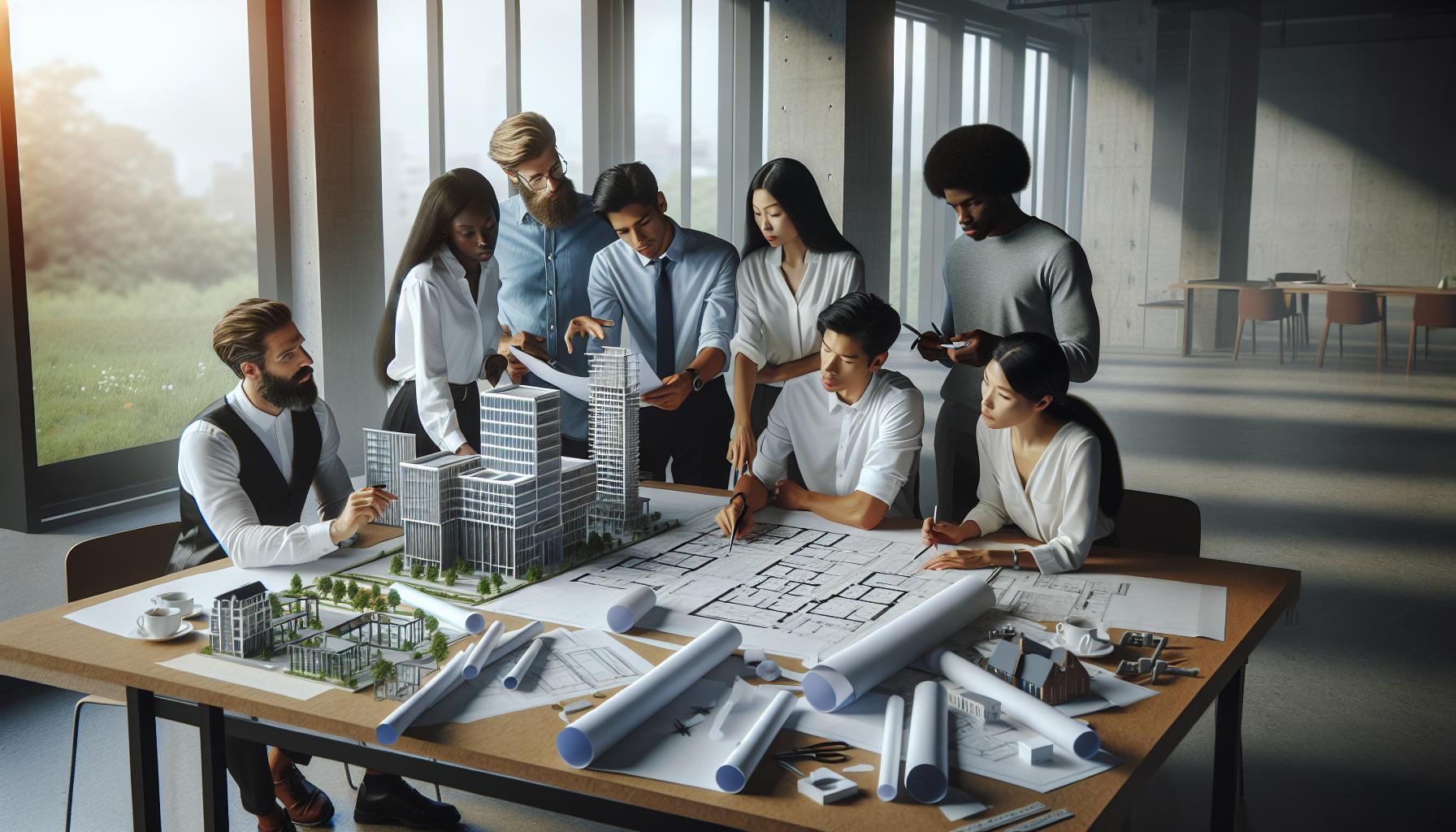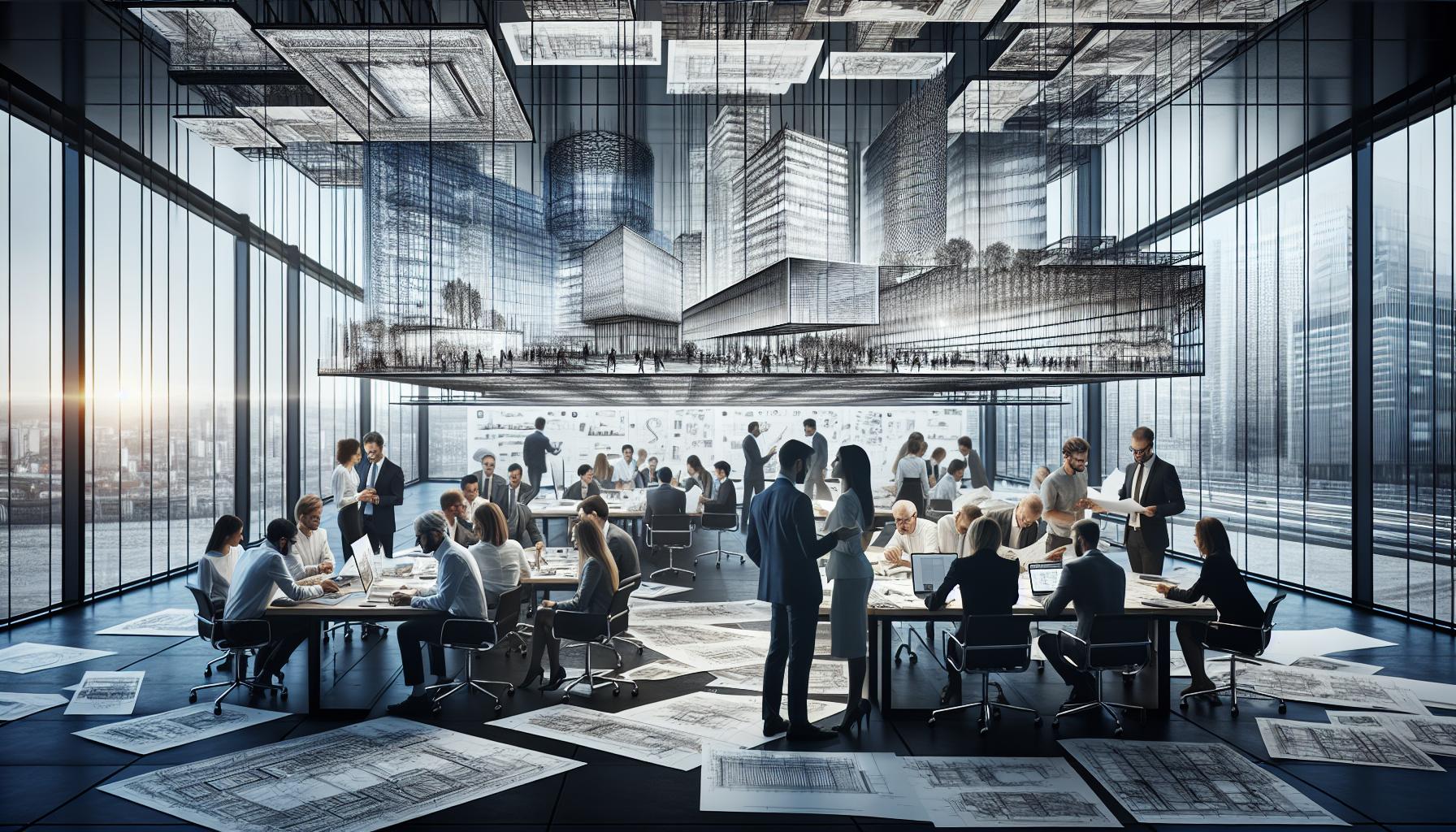In a world where cookie-cutter buildings reign supreme, architectural design collaboratives are the rebels crafting unique masterpieces. These creative powerhouses bring together diverse talents, ensuring every project is a blend of innovation and functionality. Imagine a team of architects, designers, and dreamers brainstorming over coffee, sketching ideas that could make even the most mundane structures sing with personality.
What sets these collaboratives apart? It’s all about collaboration, not just in name but in practice. They harness the collective genius of their team, turning wild ideas into stunning realities. With a sprinkle of humor and a dash of professionalism, they transform visions into spaces that inspire awe. So, if you’re tired of boring buildings and crave something extraordinary, dive into the world of architectural design collaboratives. They’re not just building structures; they’re crafting experiences that leave a lasting impression.
Architectural Design Collaborative
Architectural design collaboratives emerge from the need for creativity in an era dominated by generic buildings. Formed by a diverse mix of architects, designers, and creative thinkers, these teams harness their collective expertise to create innovative structures. Collaboration serves as the foundation of these projects, allowing fresh ideas to flow and evolve into functional art.
Unique design outcomes arise from the variety of perspectives offered by team members. Inspiration often stems from cross-disciplinary dialogues, resulting in memorable experiences. Projects reflect not only aesthetic goals but also respond to the surrounding environment, community needs, and cultural context.
Innovative methodologies define the processes within architectural design collaboratives. Iterative design practices encourage experimentation, where initial concepts undergo multiple revisions based on feedback. This approach enhances problem-solving, ensuring that each design decision aligns with the project’s vision.
Holistic designs often result from integrating sustainability into each phase of collaboration. Sustainable practices ensure that buildings are not only visually impactful but also environmentally responsible. By prioritizing energy efficiency, use of sustainable materials, and creating healthier spaces, collaboratives contribute positively to the ecosystem.
Investment in collaborative processes ultimately elevates architectural outcomes. Clients benefit from engaging in a dialogue throughout the design phase, often leading to spaces that exceed expectations. The ultimate goal centers around creating inspiring environments that resonate with users across various contexts, proving that architecture can be both functional and artistically fulfilling.
Key Benefits of Collaborative Design

Collaborative design offers numerous advantages that elevate architectural outcomes. Teams harness diverse talents and perspectives, allowing for the creation of exceptional spaces.
Enhanced Creativity and Innovation
Creative synergy emerges as multiple ideas blend together. Different backgrounds generate unique concepts, often resulting in groundbreaking designs. Collaboration encourages team members to challenge one another, which leads to innovative solutions. By exchanging viewpoints, designers can explore unconventional approaches that meet project goals. The iterative nature of the collaborative process supports experimentation, enabling teams to refine ideas based on constructive feedback.
Improved Efficiency and Speed
Working together enhances project timelines significantly. Clear communication among team members streamlines decision-making processes. Dedicated roles ensure that tasks are assigned effectively, preventing overlaps and minimizing delays. This coordinated effort leads to quicker resolution of challenges that may arise during the design phase. Allocating resources efficiently allows for better management of time and budget constraints. Teams often find that they can adapt swiftly to changes in project scope or client requirements.
Challenges in Collaborative Design

Collaborative design faces several challenges that can impede its effectiveness. Effective teamwork relies heavily on communication, and barriers often arise in this area.
Communication Barriers
Diverse backgrounds among team members lead to varied communication styles. These differences can result in misunderstandings or misinterpretations of project requirements. Clarity becomes paramount, as unclear messages can hinder collaboration. Regular check-ins serve as an effective strategy to ensure everyone stays aligned with the project’s goals. Establishing a shared language or common terminology aids in minimizing confusion. Active listening plays a vital role, as it fosters an environment where all voices are heard and valued.
Project Management Hurdles
Managing deadlines can be particularly challenging in a collaborative setting. Disparate work styles and scheduling conflicts often affect progress. Setting clear deadlines and milestones helps maintain focus on critical tasks. Coordination among team members should be prioritized to streamline workflows. Utilizing project management tools enhances visibility into responsibilities and provides real-time updates on project status. Regular evaluations allow teams to reassess timelines and address potential bottlenecks, ensuring successful project completion.
Successful Examples of Architectural Design Collaboration

Architectural design collaboration has led to numerous successful projects that exemplify the power of collective creativity. Not only do these projects stand out for their innovative approaches, but they also highlight the impact of interdisciplinary teamwork.
Notable Projects
The High Line in New York City serves as a prime example of architectural collaboration. This elevated park transformed an old railway into a green space, thanks to the joint efforts of landscape architects, urban planners, and the community. Similarly, the Centre Pompidou in Paris showcases the unique contributions of architects Richard Rogers and Renzo Piano. Their combined visions created a contemporary cultural hub that resonates with visitors. Both projects reflect how collaborative efforts can redefine urban spaces and elevate public experiences.
Lessons Learned from Collaborative Efforts
Success in architectural collaboration hinges on clear communication and shared visions. Establishing a common language among team members enhances understanding and minimizes misunderstandings. Regular brainstorming sessions also facilitate the flow of ideas, allowing for diverse perspectives to shape the design. Utilizing project management tools streamlines workflows and fosters accountability, ensuring everyone is aligned with deadlines. Regular evaluations throughout the process provide opportunities to adapt and refine goals, leading to more successful outcomes.
Future Trends in Architectural Design Collaboration
Emphasis on technology plays a crucial role in shaping future architectural design collaboratives. Virtual reality and augmented reality tools enhance design visualization, enabling stakeholders to engage with spaces before construction begins. These technologies foster real-time collaboration, allowing architects to make informed design decisions quickly.
Sustainability continues to elevate its importance within collaborative processes. Increasingly, design teams integrate renewable energy solutions and eco-friendly materials into their projects. This shift not only reflects growing environmental awareness but also aligns with client expectations for responsible design practices.
Data-driven design emerges as another key trend. Architects utilize data analytics to inform decision-making, leading to optimized function and performance in buildings. By analyzing user behavior and environmental factors, teams create tailored solutions that enhance user experience.
Interdisciplinary cooperation expands in future collaboratives. Professionals from diverse fields such as engineering, landscape architecture, and urban planning contribute valuable insights. This approach strengthens design outcomes while addressing complex challenges posed by urban environments.
Adaptive reuse increasingly captures attention in architectural discussions. Transforming existing structures into innovative spaces not only preserves cultural heritage but also reduces the environmental impact of new construction. Collaboratives prioritize these projects, balancing aesthetics with functional requirements.
Flexibility remains vital in collaborative practices. As project demands evolve, teams must be prepared to adapt their strategies. Integrated project delivery methods promote communication and streamline processes, ensuring responsiveness to client needs.
Innovative educational approaches rise in prominence, as design schools embrace collaborative models. Future architects are increasingly trained to work in teams, enhancing their ability to drive creativity and problem-solve in diverse environments. These educational shifts prepare emerging professionals for a collaborative industry landscape.
Architectural design collaboratives represent a transformative approach to creating spaces that inspire and engage. By harnessing the collective talents of diverse professionals, these teams push the boundaries of creativity and innovation. Their focus on sustainability and community responsiveness ensures that each project not only meets aesthetic standards but also contributes positively to the environment.
As technology continues to advance, the potential for collaboration will only grow. Embracing new tools and methodologies will empower teams to tackle complex challenges while preserving cultural heritage. Ultimately, the commitment to effective communication and shared goals will drive the future of architectural design, leading to memorable spaces that resonate with users and elevate the built environment.



